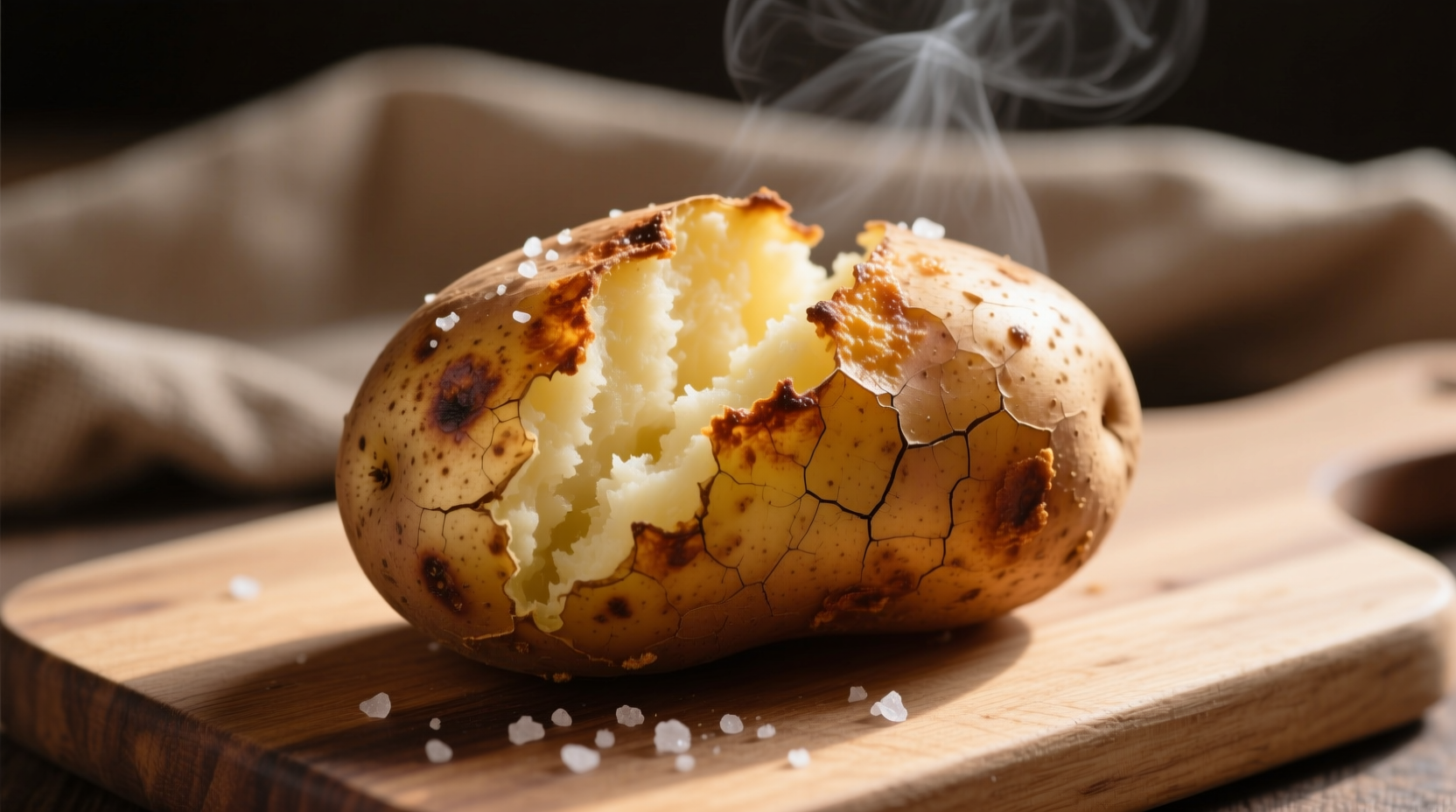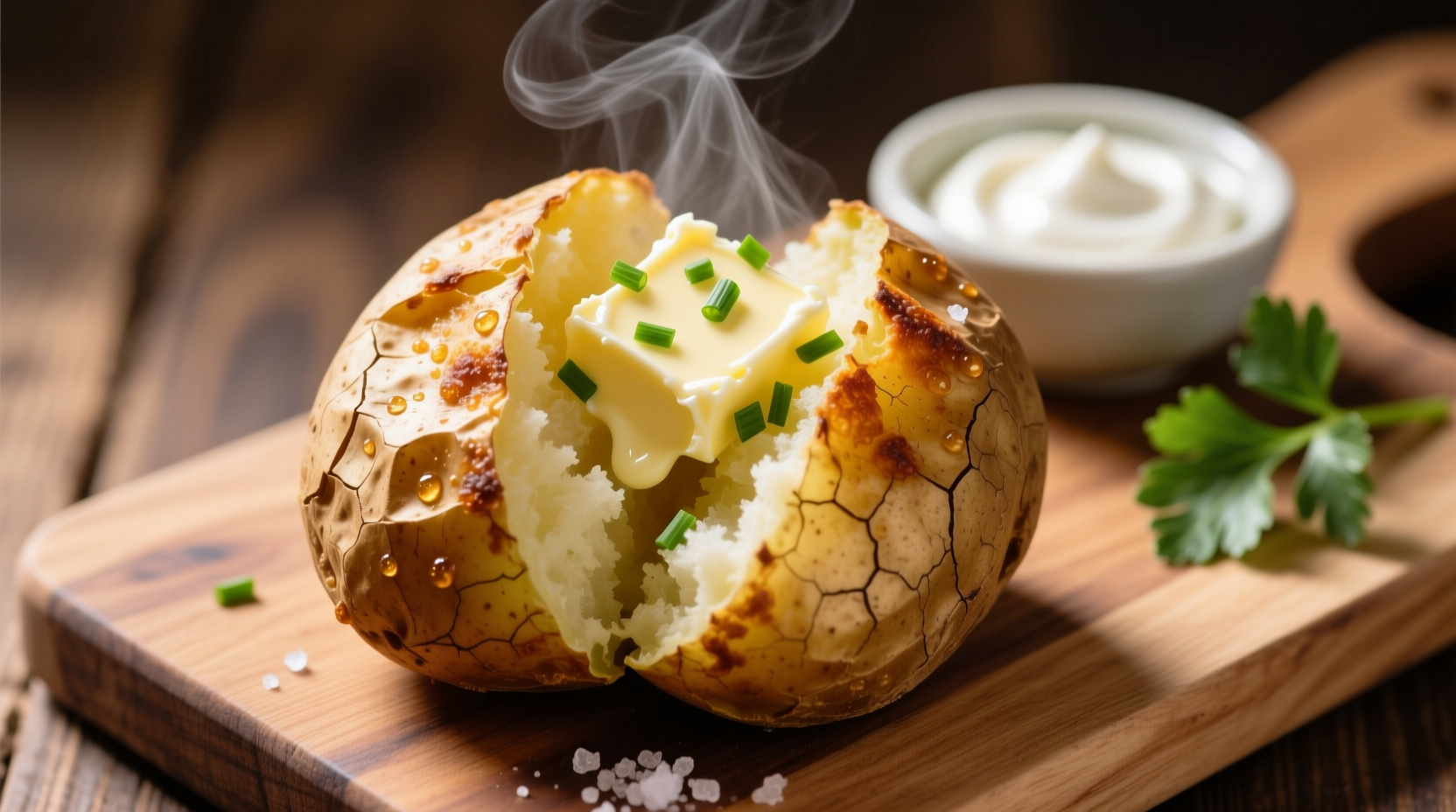The Science Behind Perfectly Baked Potatoes
Understanding potato composition transforms your baking results. Russet potatoes contain 22% dry matter—ideal for fluffy interiors. When heated, starch granules absorb water, swell, and gelatinize between 140-194°F (60-90°C), creating that signature light texture. The Maillard reaction at 300°F+ (149°C+) develops complex flavors in the skin. Skipping the pre-bake oil rub misses this critical flavor development opportunity.

Potato Selection Guide: What Works Best
Not all potatoes bake equally. Russets dominate professional kitchens for good reason:
- Russet (Idaho): High starch content (20-22%) creates fluffy interiors—ideal for classic baked potatoes
- Yukon Gold: Medium starch (16-18%) yields creamy texture—better for mashed applications
- Red Potatoes: Low starch (14-16%) maintains shape—unsuitable for traditional baking
Choose uniformly sized potatoes (8-10 oz) for consistent cooking. Avoid sprouted or green-tinged specimens, which contain solanine—a naturally occurring toxin that increases with light exposure (FDA Food Code 3-401.11).
Step-by-Step Baking Process
Preparation Essentials
Proper preparation prevents explosions and ensures even cooking:
- Wash thoroughly under cold water using a vegetable brush
- Dry completely with paper towels—moisture creates steam pockets
- Puncture 6-8 times with fork (1/4" deep)—critical safety step
- Rub with 1 tsp oil per potato and coarse salt
Oven Baking Method
| Size (oz) | Temperature | Time | Internal Temp |
|---|---|---|---|
| 8-10 | 400°F (204°C) | 45-55 min | 205-210°F (96-99°C) |
| 12-14 | 400°F (204°C) | 55-65 min | 205-210°F (96-99°C) |
| 16+ | 375°F (190°C) | 65-75 min | 205-210°F (96-99°C) |
Place potatoes directly on oven rack with baking sheet on lower rack to catch drips. Rotate halfway through cooking. The perfect baked potato yields slightly when squeezed and shows small cracks in the skin. Insert an instant-read thermometer into the center—205-210°F (96-99°C) indicates complete starch gelatinization.
Common Mistakes That Ruin Baked Potatoes
Even experienced cooks make these critical errors:
- Skipping the oil rub: Creates tough skin instead of crispy exterior
- Wrapping in foil: Steam environment prevents skin crisping (USDA Food Safety Guidelines)
- Incorrect temperature: Below 375°F (190°C) extends cooking time without improving texture
- Not resting: Cutting immediately releases steam—wait 5 minutes for optimal fluffiness
Serving Suggestions That Elevate Your Potato
Professional chefs layer flavors in three stages:
- Internal seasoning: Sprinkle salt inside the fluffed potato before adding toppings
- Fat incorporation: Mix 1 tbsp butter per potato while fluffing for even distribution
- Temperature contrast: Add cold toppings (sour cream, chives) to hot potato for textural interest
Classic combinations include bacon and cheddar, chili and sour cream, or olive oil with rosemary. For nutritional balance, pair with protein-rich toppings—the Academy of Nutrition and Dietetics recommends combining potatoes with lean proteins for complete meals.
Storage and Reheating Best Practices
Proper storage maintains texture and safety:
- Cool completely before refrigerating (within 2 hours)
- Store in airtight container for up to 5 days (FDA Food Code)
- Reheat in 350°F (177°C) oven for 20-25 minutes—microwaving creates uneven texture
- Never reheat potatoes in foil—creates anaerobic environment for potential bacterial growth











 浙公网安备
33010002000092号
浙公网安备
33010002000092号 浙B2-20120091-4
浙B2-20120091-4